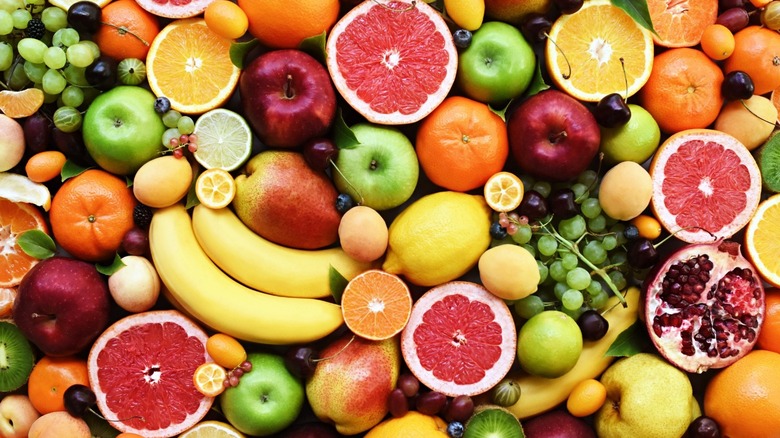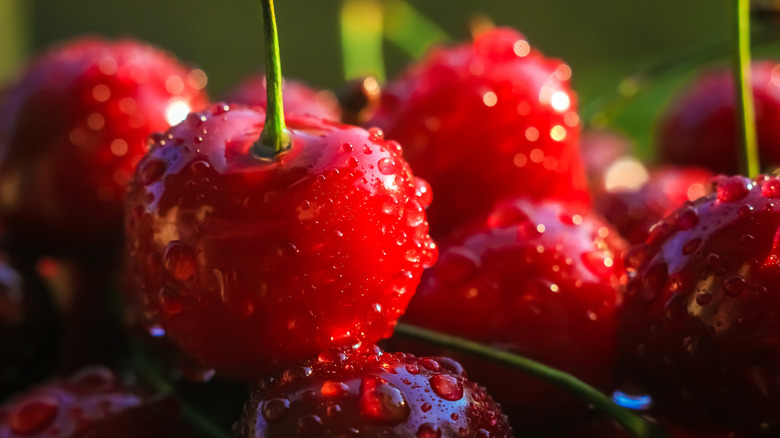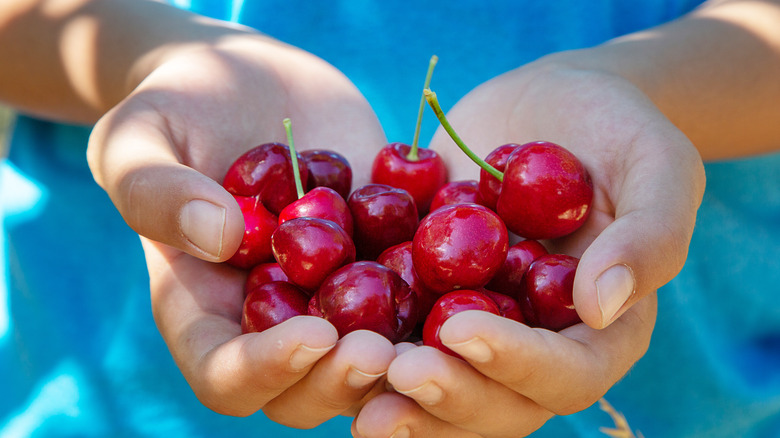Researchers Think They Unlocked The Secret To Reproducing This Fruit Flavor
While a Rembrandt still life may visualize the perfection of fruit, food science has longed to recreate the succulent taste of real fruit flavor. Although packages have long touted "real fruit" in those offerings that never grew from a plant, the reality is that sometimes science can reproduce that taste experience in a satisfying way.
Although many people appreciate that a bowl of real fruit can be a better choice than a bowl of sugary candy, the reality is that the bag of gummy bears is often gone more quickly than the bag of cherries. Putting aside the "work" of pitting cherries, that cherry-like flavor in a candy satisfies the sweet tooth. As GetSuckered.com found, cherry is the most popular hard candy flavor. Although the nuance in that cherry-ness varies, some people cannot resist the calling of that vermillion color in the bowl. While the craving is there, wouldn't the experience be even better if that cherry flavor was even more flavorful? Food scientists think that they have discovered a key ingredient to making that situation happen.
Why do fake fruit flavors taste so fake?
Even though the hyper-realistic cupcakes have captivated foodies' attention, the world of fake fruit flavors has long disappointed the tastebuds. As a writer for The Takeout said, that artificial cherry flavor in cough medicine left an indelible scar on her food enjoyment. But, that commentary isn't limited to just one food writer. In some ways, fake fruit flavors have been etched in food history.
According to TheWorld.org, artificial fruit flavors are strongly rooted in food history. Dating back to the 17th century, that "fake" fruit flavor, especially cherry flavor, is considered an "heirloom." When scientists first started to create that taste, it was said to focus on "sensory resemblances." With limited chemicals available, the cherry flavor became cloyingly sweet with a slightly bitter almond note.
Even though today's scientists are more well equipped to create a "real" fruit flavor, that sense memory calls to people. Love it or hate it, no one wants the cherry popsicle to taste differently from that summer childhood memory. Still, if that particular sense memory is so ingrained, shouldn't it be the best version available?
Did food science just discover the key to a better cherry flavor?
As reported by The Takeout, a Perdue science team published research on how to produce real cherry flavor in a synthesized way in Nature Communications. While the report includes too many polysyllabic words and scientific concepts not covered in high school chemistry, the key takeaway is that there is a better way to create an enhanced cherry flavor.
Per the report, the key to a better-tasting cherry flavor is benzaldehyde. While food scientists have leveraged that information in the past, now they have the molecular recipe to recreate that component. While not necessarily a copy-cat recipe that many home cooks adapt, there are some similarities. When a scientist can recreate the natural component in a laboratory setting, it can lead to more precision in creating that more flavorful cherry candy, beverage, or other food. Maybe it's even the key to a Cherry Coke phase. Going forward that bright red popsicle might look the same but the first lick could be even more satisfying.


